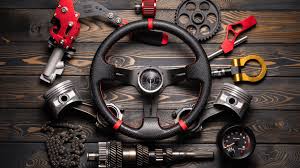Understanding the basic components of a clutch for car is not only essential for every driver but also empowers you to make informed decisions about your vehicle’s maintenance and repairs. In this comprehensive guide, we delve into the fundamental parts of a car, shedding light on their functions and importance.
Engine:
The engine is the heart of any vehicle, responsible for converting fuel into mechanical energy to power the car. It consists of various intricate components such as the cylinders, pistons, crankshaft, camshaft, and valves. Regular maintenance, including oil changes and tune-ups, is crucial to keep the engine running smoothly and efficiently.
Transmission:
The transmission is the mechanism that transfers power from the engine to the wheels, allowing the vehicle to move forward or backward. There are two main types of transmissions: manual and automatic. Manual transmissions require the driver to shift gears manually using a clutch pedal and gear stick, while automatic transmissions shift gears automatically. Proper maintenance of the transmission fluid and regular inspections are vital to ensure smooth gear shifting and prolong the transmission’s lifespan.
Brakes:
Brakes are arguably the most critical safety feature of any car. They work by converting kinetic energy into heat through friction, slowing down or stopping the vehicle when necessary. The primary components of a car’s braking system include brake pads, rotors, calipers, and brake fluid. Regular brake inspections and timely replacements of worn-out brake pads are essential to maintain optimal braking performance and ensure your safety on the road.
Suspension System:
The suspension system plays a crucial role in providing a smooth and comfortable ride by absorbing shocks from uneven road surfaces. It consists of various components such as springs, shock absorbers, struts, and control arms. A well-maintained suspension system not only enhances ride comfort but also contributes to better handling and stability, especially during cornering and braking maneuvers.
Exhaust System:
The exhaust system is responsible for safely removing harmful gases produced during the combustion process and reducing engine noise. It comprises several components, including the exhaust manifold, catalytic converter, muffler, and exhaust pipe. Regular inspections of the exhaust system are essential to detect and repair leaks, rust, or damage, which can affect engine performance and emissions.
Electrical System:
The electrical system in a car powers various components and accessories, including the lights, starter motor, ignition system, and entertainment system. It relies on the battery, alternator, and various wiring harnesses to function correctly. Routine inspections of the battery, alternator, and electrical connections are crucial to prevent starting issues, electrical failures, and other problems that can disrupt the vehicle’s operation.
Conclusion:
Understanding the essential components of a car is vital for every driver to ensure safe and reliable transportation. By familiarizing yourself with the engine, transmission, brakes, suspension system, exhaust system, and electrical system, you can better appreciate the inner workings of your vehicle and take proactive measures to maintain its optimal performance. Regular maintenance and timely repairs are key to extending the lifespan of your car and enjoying trouble-free driving for years to come.

